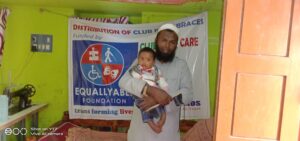Don’t Worry! We have your answers!
What is a disability?
Okay okay, we have a feeling you won’t like the sound of this but there is no single accepted definition of a disability. Different definitions and disability questions may identify different populations with disabilities and result in larger or smaller estimates. So we included several definitions below to save you the trouble of searching via google and/or bing:
The United States Department of Justice Civil Rights Division also known as ADA defines a person with a disability:
as a person who has a physical or mental impairment that substantially limits one or more major life activity. This includes people who have a record of such an impairment, even if they do not currently have a disability.
The Merriam-Webster dictionary tells us that disability is:
A physical or mental condition that limits a person’s movements, senses, or activities.
We loved this definition of disability from www.disabled-world.com:
A disability is defined as a condition or function judged to be significantly impaired relative to the usual standard of an individual or group. The term is used to refer to individual functioning, including physical impairment, sensory impairment, cognitive impairment, intellectual impairment mental illness, and various types of chronic disease. Yet a disability is not just a health problem — it is a complex phenomenon, reflecting the interaction between features of a person’s body and features of the society in which he or she lives.
Remember, it’s a disability, not an inability
Types of disabilities:
The main categories of disability are physical, sensory, psychiatric, neurological, cognitive and intellectual. Some examples of common disabilities you may find are:
vision Impairment
deaf or hard of hearing
mental health conditions
intellectual disability
acquired brain injury
autism spectrum disorder
physical disability
BUT WAIT…
Keep in mind that disabilities can affect people in different ways, even when one person has the same type of disability as another person. Some disabilities may be hidden, known as an invisible disability.
According to the World Health Organization, a disability has three dimensions:
Impairment in a person’s body structure or function, or mental functioning; examples of impairments include loss of a limb, loss of vision or memory loss.
Activity limitation, such as difficulty seeing, hearing, walking, or problem-solving.
Participation restrictions in normal daily activities, such as working, engaging in social and recreational activities, and obtaining health care and preventive services
According to the 2017 American Community Survey (ACS), in 2017, the prevalence of the six disability types among persons of all ages in the US was:
2.3% reported a Visual Disability
3.6% reported a Hearing Disability
6.9% reported an Ambulatory Disability
5.1% reported a Cognitive Disability
2.6% reported a Self-Care Disability
5.6% reported an Independent Living Disability
Although some people are born with a disability, many people later acquire a disability. For example, a person may acquire a disability because of a horrible car accident or may develop a disability as they age.
And above all else, please remember:
Why is it important to assist people with disabilities?
If we consider the staggering number of disabled folks in USA, India and other counties, and the limited resources available to them, it becomes fairly obvious that a lot needs to be done to help this community.
Estimates show that only 5% of people with mobility impairments receive any kind of orthotics and prosthetics aides such as artificial limbs and calipers; only .1percent of people with disabilities have jobs in government agencies; less than 1% of children with disabilities go to school. They need our assistance, whatever we can do, will help make a difference. Join hands with EquallyAble Foundation to make a difference.
Today, EAF’s work is focused on the estimated 80% of people with disabilities who live in rural areas of developing nations where disability-related services are often not available. It currently has programs in 13 countries, primarily in South Asia and Africa, where its work is directed toward impoverished communities.
EquallyAble is dedicated to helping and empowering people of all ages.








